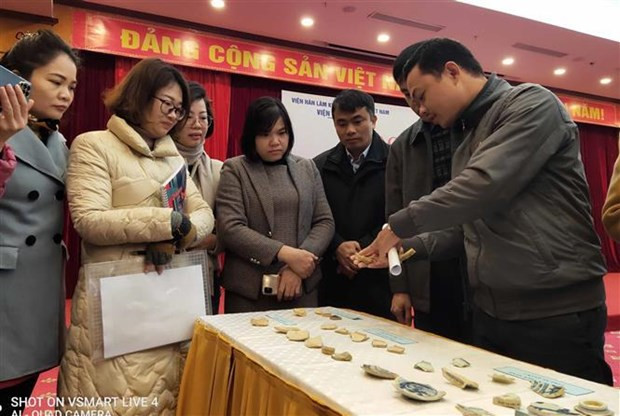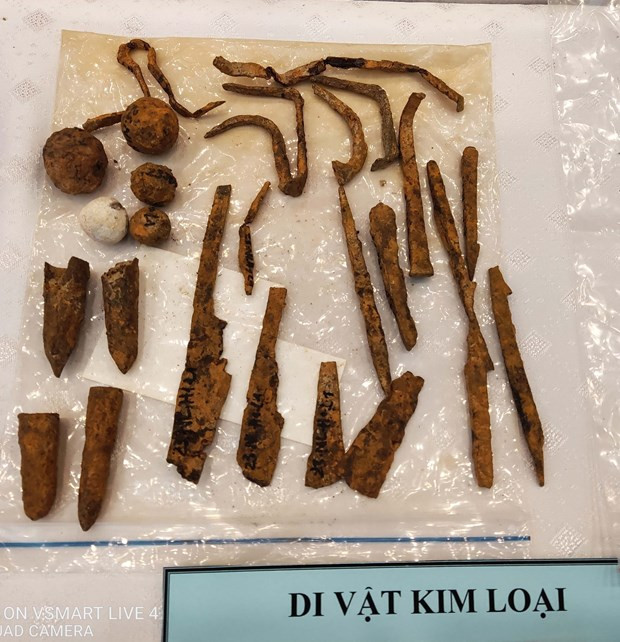
Some objects recently unearthed at archaeological sites in Cao Bang povince are introduced on December 26. (Photo: VNA)
To shed new light on historical issues in Cao Bang, the Institute of Archaeology under the Vietnam Academy of Social Sciences recently coordinated with the Cao Bang Department of Culture, Sports and Tourism to conduct excavations of Ban Phu Citadel (Hung Dao commune, Cao Bang city), Na Lu Citadel (Hoang Tung commune, Hoa An district), and Ban Thanh hamlet (Hung Dao commune, Hoa An district).
According to historical records, Ban Phu Citadel was where three kings of the Mac Dynasty (1527 - 1592), namely Mac Kinh Cung, Mac Kinh Khoan, and Mac Kinh Vu, granted audiences.
Excavating a 150 sq.m area in the south of this citadel, archaeologists found a number of pottery and porcelain pieces dating back to the Ly Dynasty (1009 - 1225), the Tran Dynasty (1225 - 1400), the Le So (1428 - 1527) Dynasty, and the Mac Dynasty, with most of the objects belonging to the Mac Dynasty. Besides, the majority of pottery items from China discovered there date back to the Ming Dynasty in the 17th century.
Basing on the findings, scientists perceived that Ban Phu Citadel was built in around the 17th century, the same time the Mac clan retreated to Cao Bang after they had been defeated in Thang Long capital, now Hanoi.
Meanwhile, Na Lu is one of the four most important ancient citadels in Cao Bang. It was built at an order by Gao Pian, a general of the Tang Dynasty (618 - 907), when Vietnam was under the rule of this Chinese dynasty. In the 11th century, Nung Ton Phuc, a ruler of the Quang Nguyen region (now Cao Bang), continued upgrading the facility. In 1589, the Mac clan retreated to Cao Bang and chose Na Lu Citadel as its base, according to legend and historical records.

Some metal objects found at the archaeological site of Na Lu Citadel (Photo: VNA)
At Na Lu, archaeologists dug a total area of 220 sp.m., discovering vestiges of a citadel gate and a wide range of objects from bricks, tiles to pottery and metal items dating back to different historical periods like the Tang and Ming dynasties of China, and the Tran, Le Son, and Mac dynasties of Vietnam.At the archaeological site in Ban Thanh hamlet, they excavated 50 sq.m. in the “Guoc da Ban Thanh” area, which was once believed to be linked with the legend of “nine lords competing for the throne” in the third century BC.
However, experts found that stone structures at Ban Thanh used materials, including limestone, pebble, brick, and wooden stake dating back to the 17th century, along with pottery items of the Ming Dynasty. They held that this could be a stone bridge over a stream constructed during the Mac Dynasty.
Researchers noted that due to limited conditions, archaeological studies were carried out on just a small scale, so they are still unable to make precise conclusions on the history in Cao Bang. In addition, the relic sites are being damaged, and local authorities should take actions early to protect them./.VNA